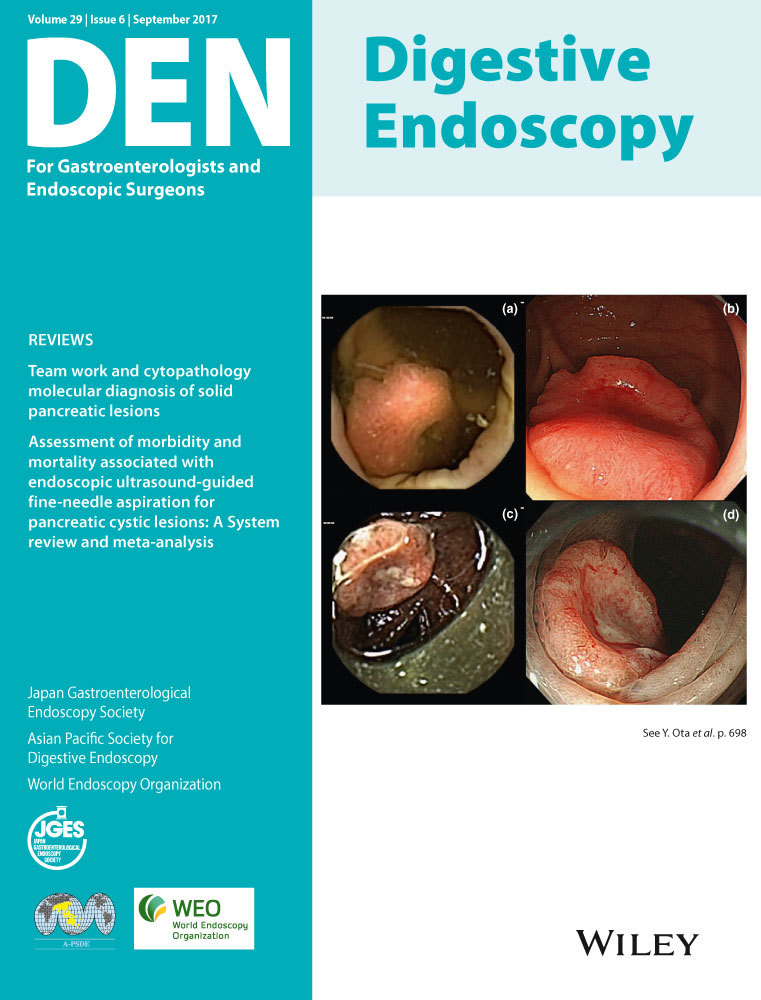Feasibility of liquid nitrogen cryotherapy after failed radiofrequency ablation for Barrett's esophagus
Abstract
Background and Aim
Radiofrequency ablation (RFA) for dysplastic Barrett's esophagus (BE) is highly effective. RFA failures are infrequent but can be a challenging cohort to manage. There are limited data on the feasibility of liquid nitrogen cryospray ablation for complete eradication of dysplasia (CE-D) and/or intestinal metaplasia (CE-IM) after RFA has failed to achieve CE-IM in patients with dysplastic BE.
Methods
This is a retrospective review from two medical centers of prospectively maintained databases looking at patients that underwent liquid nitrogen cryospray ablation for refractory intestinal metaplasia post failed RFA.
Results
Eighteen patients were identified that met inclusion criteria. Eleven patients had persistent dysplasia and IM following RFA and seven had persistent non-dysplastic IM. More than 80% of patients were male with long-segment BE (median length 8 cm). Seventy two percent of patients with dysplasia achieved CE-D after cryotherapy. Fifty percent (9/18) of all RFA failures achieved CE-IM with cryotherapy. In comparison, RFA has a CE-IM of 78% in a less challenging treatment naïve cohort from a large-scale meta-analysis of 3802 patients. No adverse events occurred in our cohort.
Conclusion
Cryospray ablation is feasible and safe for achieving CE-D and CE-IM after RFA failure. The CE-D rates are high with cryotherapy in this population. CE-IM with cryotherapy is acceptable in this difficult-to-treat cohort when compared to CE-IM rates with RFA in dysplastic BE treatment naïve patients (50% vs 78%).




